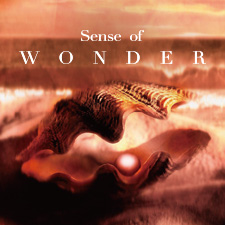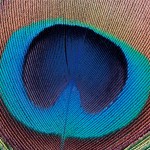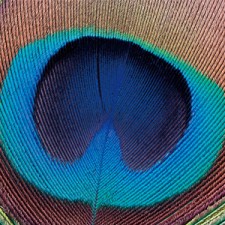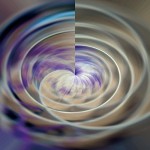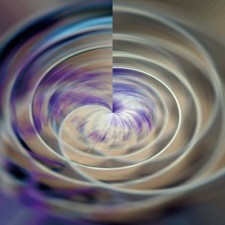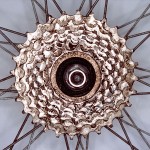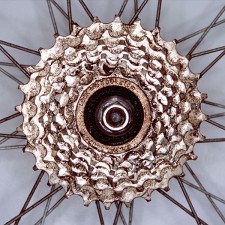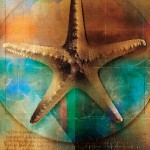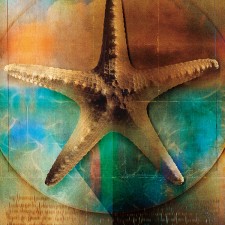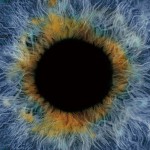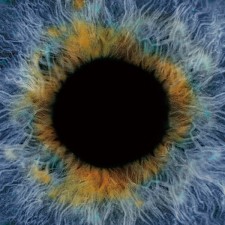◉ Fog becomes drops, rivers become oceans…
But what would you get if you instead were to divide water into smaller parts? Or gold or iron, flames or winds, oranges or people… Such questions about “matter” are the origin of atomism. Once you start thinking about it, a whole bunch of new questions spring to mind. Into just how small parts can you divide water? Are water and fire ultimately made up of the same elements? Riddles like these were something that already ancient Greek philosophers like Leucippus and Democritus struggled with.
◉ The dream of being able to describe the world with just a simple set of elements has remained unchanged from ancient philosophy to modern science. Simplicity and elegance are even considered measures of the truthfulness of physical laws. In actual fact, the pursuit of elegance seems to have been quite successful both in the “natural philosophy” of ancient Greece, of course, and in the “natural science” (i.e. classical physics) of the past few hundred years. But while Democritus’ principle that “matter is discontinuous and consists of vacuum and indivisible particles, or ‘atoms’” was revived by John Dalton at the beginning of the 19th century, already at the end of that century, matter started to take on aspects that were neither simple nor elegant, but almost incomprehensible. First of all, even as the actual existence of atoms became apparent, it turned out that they had an internal structure as well, and so were not indivisible “atoms” after all. Atoms were built up of protons and other elementary particles, but the list of different particles kept on growing and growing, until they too lost their status as fundamental entities when quarks where discovered in the second half of the 20th century. Furthermore, an interpretation that is apparently considered even more “elegant” suggests that matter does not consist of particles at all but rather of “dense” regions of space (or fields). Somewhere along the way, the quest for the ultimate components of matter seems to have lost sight of its goal.
◉ However, when you trace the development of modern atomic theory from Dalton to quarks, you get the feeling that scientists’ understanding of nature has constantly been challenged at every step on the way. It has been a wonderland where light can be both wave and particle, energy takes discrete values, a single photon can pass through two slits simultaneously, and some particles even appear to travel backwards in time. There is also the problem of individuality, which relates to the very definition of atoms and remains unsolved ever since ancient Greece. This is the question of whether the quarks that make up this cup can be distinguished from the quarks in the cat over there. The traditional stance of atomic theory has of course been that there is no distinction between quarks of the same type, but the fact that things don’t seem to be quite that simple is both vexing and interesting.
◉ Now, imagine standing in front of a mirror. How can you distinguish the you in the mirror from the you in front of it? Well, obviously left and right are switched around, so that distinction should not be too difficult, you might think. But why are only left and right reversed, and not up and down? Somewhat roughly speaking, the answer is that left and right are not switched around at all! As you face the mirror, your right hand in the mirror is still to your right, and your left hand to your left. Incidentally, symmetry, such as between left and right, is another major theme of physics.
Let’s say we were to discuss directions with an alien from some faraway planet. Up and down can be defined with respect to gravity, and front and back with respect to the line of movement, but left and right cannot be defined in any easy way unless we were to meet and communicate directly. As long as we are on the same planet, the idea of left and right can be explained using the magnetic poles and the movement of the sun. But without any knowledge of the magnetic fields on the alien’s world or whether the sun rises in the east or the west on that planet, we can’t make any use of those notions. To begin with, there is no unambiguous way to tell whether a magnetic needle points to the north or to the south. This means that unless there is some asymmetric object we can both observe, it is impossible to define left and right.
◉ You cannot superimpose yourself completely on the you in the mirror. This is because the human body is left-right asymmetric. In the case of physics, however, even electromagnetic phenomena that at first glance appear asymmetric turn out to be perfectly symmetric when swapping up and down. That is the reason we can’t communicate about left and right with aliens. Unlike Alice’s looking-glass world, there is nothing mysterious about the mirror world. Asymmetric phenomena may occur at any time, of course, but the mirror-reversed phenomenon could equally well occur. Which way things turn out is a complete coincidence… or so it was believed.
◉ In 1956, two Chinese-American physicists named Yang and Lee pointed out that nature is asymmetric with respect to certain phenomena, and an experiment conducted by Dr. Wu of Columbia University showed that more electrodes are emitted from one of the poles during beta decay of Cobalt-60 nuclei. Finally, mankind had a basis for establishing a definition of left and right, even when communicating with aliens. Perhaps that asymmetry too may be overturned one day, but possibly the matter of getting in touch with some aliens comes first.






